Neck Pain
What is a Neck Pain?
The majority of people will at some point in their lives have neck pain, which is a very common condition. The neck is highly vulnerable to injury and strain due to its mobility and the amount of weight it must support. From poor posture to injuries to underlying medical conditions, there are many potential causes of neck soreness and pain.
In this blog post, we will cover the most common causes of neck pain, risk factors that can increase your chances of developing it, and symptoms you may experience if you have a sore or stiff neck. We’ll also provide tips to prevent neck pain before it starts as well as suggest both self-care techniques and medical treatments to manage pain and alleviate discomfort when you already have it.
Learning more about the root causes and effective management strategies for neck soreness can help you deal with this annoying ailment whenever it crops up. Arm yourself with information so that nagging ache doesn’t interfere any more than necessary with your productivity and enjoyment of life. Read on to become better acquainted with how to recognize, prevent, and treat neck pain.
Clinically Relevant Anatomy
Understanding the anatomy of the neck aids in diagnosing and treating the underlying causes of neck pain. The neck contains several vital structures that can contribute to discomfort and dysfunction if injured or irritated.
Vertebrae
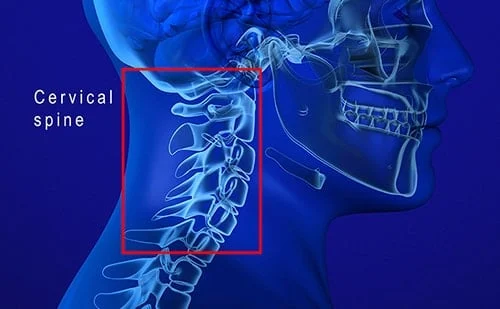
The cervical spine consists of seven interlocking vertebrae designated C1 through C7. These bones provide support for the head and enable flexible movement. The vertebral joints can develop arthritis and degeneration leading to neck stiffness and soreness. Herniated discs between the vertebrae can also cause painful compression of nerve roots.
Muscles
Superficial and deep muscles enabling neck mobility and stability include the sternocleidomastoid, trapezius, splenius capitis cervicis, and semispinalis capitis. Muscle strains and spasms often underlie acute neck pain. Postural imbalance and improper biomechanics can overwork these muscles leading to trigger points and fatigue.
Nerves
The cervical spinal cord and nerve roots course through the vertebral foramina. Irritation via inflammation, pinching, or constriction of these nerves can contribute to radiating pain, numbness, and tingling down the arms. This is known as radiculopathy or “pinched nerve”.
Blood Vessels
The carotid arteries and jugular veins transport blood to and from the brain running through fascial compartments in the neck. Nearby muscle tension or neck injury poses a small risk of vessel damage or blood clots which could lead to stroke.
Types of Neck Pain
Local Neck Pain
The most classic symptom is pain actually within the neck area. This can present as:
- General soreness or stiffness in the neck muscles
- Sharp or stabbing pains in the cervical spine
- Dull, aching discomfort
- Muscle spasms and tightness
- Tenderness of neck muscles upon palpation
- Reduced range of motion when tilting and turning the neck
The specific location, intensity, triggers, and relievers of the pain can help determine if it stems from muscle tension, whiplash/strains, disc issues, arthritis, etc. Pain from stiffness often improves with movement while serious injuries cause pain worsened by activity.
Radiating Pain
Neck issues can also manifest as referred pain radiating outwards into:
- Shoulders and upper back
- The base of the skull or head causes headaches
- Arms, hands, and fingers (more suggestive of nerve impingement)
- Upper chest wall and ribs
Certain radiation patterns correspond with particular anatomical structures involved whether bone, disc, nerve, or muscle-related problems underlie the symptoms.
Other Associated Issues
Additional common manifestations contemporaneous with neck pain involve:
- Tingling or numbness down limbs
- Weakened hand grip
- Clumsiness or failing coordination
- Dizziness and impaired balance in severe cases
Paying attention to associated neurological symptoms provides insight into whether structural impingement of nerves or vertebrobasilar vascular compromise exists. Seeing patterns between symptoms guides accurate diagnosis. Misinterpretation risks missed detection of dangerous pathologies. Evaluating symptom constellations therefore significantly aids management.
Neck Pain Symptoms
Localized Pain:
- Aching, sharp, throbbing, or shooting pain contained in the neck region either centered or radiating from back to front
- May involve localized areas like one side of the neck, the base of the skull, the upper trapezius, or near the shoulder blade
- Can vary from mild soreness to severe debilitating pain
Referred Pain:
- Symptoms radiate from the neck into the shoulder, upper back, arms, hands
- Follows dermatome patterns if nerve-related
- Numbness, tingling, weakness in upper extremities
Reduced Mobility:
- Difficult or painful turning head from side to side
- Stiffness and decreased range of motion during flexion, extension, lateral bending
- Guarding movements to avoid aggravating pain
- Head tilted to one side at rest
Muscle Spasms:
- Involuntary painful muscle contractions
- Triggers include sudden motions, stress, cold exposure
- Creates visible tension bands in muscle bellies
Crepitus:
- Grating sensation with neck movement
- Comes from bone-on-bone friction with spinal arthritis
Causes of Neck Pain
Muscle Strains and Sprains
Improper Posture
Slouching over phones and laptops strains the neck by pushing the head forward out of alignment with the shoulders. This overstretches the posterior neck muscles leading to fatigue and spasms. Maintaining this posture long-term can accelerate joint degeneration.
Awkward Sleeping
The neck lacks support when sleeping in certain positions like with the neck angled off the mattress which strains muscles and ligaments. Using too many pillows or pillows that are too thick also flexes the neck. This leads to morning stiffness and ache.
Whiplash
Sudden hyperextension and then flexion of the neck from a car accident causes ligaments and muscles to tear. Symptoms like localized pain, headaches, and arm numbness occur immediately or develop later from inflammatory damage.
Repetitive Overuse
Occupations with repetitive neck motions like typing or head rotation during sports may gradually irritate joint structures. Microtrauma causes chronically tight, weary muscles prone to spasms and strain.
Traumatic Injury
Direct Blows
A fall or forceful hit directly striking the spine can fracture vertebrae, dislocate joints, or sustain disc injury. Symptoms correspond to the severity of organic damage. Bruising, swelling, numbness, or paralysis may arise.
Car Accidents
The rapid back-and-forth movement of whiplash or direct impact with the steering wheel transfers excessive forces to the neck. This injures ligaments, nerves, and soft tissues – even rupturing discs. Neck restraints prevent some trauma.
Sports Contact
Hard hits during athletic competitions like football tackles compress the spine risking intervertebral joint injury, pinched nerves, and strain. Improperly executed blocks and hits also pose danger. Protective gear aims to dissipate forces.
Systemic Disease
An autoimmune condition causing inflammation of joint linings. This erodes cervical bone and cartilage leading to instability, misalignment, and nerve compression. Neck pain is often an early RA symptom along with morning stiffness lasting over 30 minutes.
Meningitis
Inflammation of the meninges (membranes) surrounding the brain and spinal cord due to infection. The irritation and swelling presses on neck nerves causing stiff neck symptoms. Additional symptoms involve severe headaches, photophobia, nausea, and altered mental status.
Fibromyalgia
A chronic condition with widespread muscular pain and tenderness at specific “tender points”. It often co-occurs with spine arthritis. Fibromyalgia specifically provokes pain at the base of the skull, front of the neck, and upper back triggered by cold, stress, and overexertion. Sleep disruption and fatigue commonly accompany neck discomfort.
Other Disease-Related Causes
Cervicalgia can also arise secondary to cancer, autoimmune illness, and neurological disease. Infections like meningitis and encephalitis directly cause neck pain too. Understanding systemic disease involvement provides context to better manage associated neck pain.
Structural Compression
Over time the jelly-like discs between vertebrae can develop tears and protrusions. Part of the nucleus pulposus leaks out and presses on an adjacent nerve root or the spinal cord. This most often occurs at C5-C6 or C6-C7 provoking numbness/weakness down the arm.
Bone Spurs
Extra bone forms near damaged cervical joints as part of osteoarthritis. These osteophytes grow larger over time and can impinge on the nerve roots as they exit the spinal column causing inflammation. This tends to provoke neck, shoulder, and arm pain.
Soft Tissue Swelling
Injuries from accidents, poor posture, and muscle tension trigger localized inflammation. Swelling puts pressure on cervical nerves causing symptoms like numbness in the shoulder and tingling down the arms. Areas commonly impacted include the scalene, sternocleidomastoid, and trapezius muscles.
Other compressive factors include collapsed disc space from advanced arthritis, calcification of the ligamentum flavum, and hypertrophy of facet joints straining nerve structures. Appropriate imaging confirms the exact compressive lesion responsible for someone’s neck pain.
Degenerative Spinal Cord Conditions
Spinal Osteoarthritis
Breakdown of the cartilage cushions between cervical vertebrae leads to bone rubbing on bone causing inflammation and osteophyte formation. This can trigger local neck pain, stiffness, muscle spasms, and headaches. It contributes to spinal misalignment, disc protrusions, and neural impingement too.
With aging the intervertebral discs lose hydration and elasticity. Tears called fissures appear in the outer wall and problematic proteins leak out internally. This contributes to disc narrowing, arthritis, and potential herniation – all sources of neck pain.
Spinal Stenosis
Arthritic overgrowths, damaged discs, and thickened ligaments narrow the neural passageways. This compresses the spinal cord and nerve roots provoking symptoms like numb fingers, poor coordination, neck pain, and muscle weakness with activity.
Other Contributing Factors
- Emotional stress and muscle tension
- Poor ergonomics at the workstation
- Vitamin deficiencies
- Infection
Diagnosis of Neck Pain
History
The physician will inquire about the neck pain onset, location, nature, duration, aggravators, relievers, and associated symptoms. Questions address prior injury, repetitive motions, chronic illnesses, family history, neurological changes, and pain interference with work/sleep. The doctor will also perform a head-to-toe review of the systems.
Physical Exam
A comprehensive neuromusculoskeletal neck exam follows the evaluation:
- Range of motion – Neck flexion, extension, Side Flexion, and lateral rotation
- Resistance strength testing neck muscles
- Palpating for muscle spasms, swelling, and cervical tenderness
- Neurological testing – reflexes, sensation, motor strength in limbs
- Vascular exam – carotid bruits, blood pressure differences
- Structural inspection and alignment of head/neck
Red flags like trauma history, weight loss, or focal neuro deficit prompt urgent imaging due to risks of fracture, infection, or urgent surgical lesions.
Imaging
X-ray
- Displays bony anatomy
- Can detect:
- Fractures
- Advanced disc space narrowing
- Osteophytes indicative of arthritis
- Cervical alignment issues
- Instability with movement
- Congenital abnormalities
- Low-cost, accessible
- Limited soft tissue visualization
CT scan
- Detailed multiplanar imaging of bone
- Characterizes vertebral fractures
- Shows early arthritic osteophyte changes
- Visualizes facet joint osteoarthritis
- Detects some causes of neural compression
- Higher radiation exposure than X-ray
MRI
- The gold standard for assessing soft tissues
- Shows intervertebral disc pathology:
- Bulges, protrusions, extrusion
- Tears and loss of hydration signal
- Visualizes nerve roots and spinal cord
- Assesses ligamentous injury after trauma
- Most sensitive for cervical spondylolisthesis
- No radiation exposure
Advanced Testing
Electromyography (EMG) & Nerve Conduction Studies (NCS)
- Measures electrical activity of muscles and peripheral nerves
- Can confirm nerve compression causing radiating symptoms
- Assesses severity of cervical radiculopathy or neuropathy guiding treatment
- Primarily indicated for limbs showing focal weakness on exam
Diagnostic Facet Joint Injections
- Local anesthetic injected into the cervical facet joints
- Temporarily blocks pain from facet arthropathy
- Confirms joints as a pain generator if symptoms improve
- Guides radiofrequency nerve ablation procedures
Neurovascular Ultrasound
- Doppler ultrasonography characterizes vertebral/carotid artery blood flow
- Identifies atherosclerotic plaque obstructing vessels
- Detects dissections and aneurysms after trauma
- Can visualize nerve root compression dynamically
Discography
- Injects contrast dye into an intervertebral disc thought to be a pain source
- Dye leakage indicates annular fissures
- Pain relief after numbing injection confirms discogenic pain
- Guides spinal fusion surgery planning
Treatment of Neck Pain
Conservative Treatment
Rest
- Taking a break from aggravating activities allows injured tissues to heal. This may involve missing work, avoiding sports/exercise, restricting the use of computers/phones, etc. Use supports like pillows to assist with resting positions. Rest for a day or two at the first onset of pain.
Heat/Ice Therapy
- Applying ice packs can decrease inflammation and numb pain. Use for 15-20 minutes at a time, multiple times per day at first.
- Heat packs and warm compresses can ease muscle tension and increase blood flow. Use heating pads or warm towels/showers.
OTC Medications
- Acetaminophen (Tylenol) or NSAIDs like Advil help relieve pain in mild cases. They also reduce inflammation. Should be taken as needed per dosage instructions.
- Topical creams like capsaicin may numb nerve pain locally
Physical Therapy
- Can utilize ultrasound, TENS unit electrical stimulation, or massage to relax tissues
- Traction devices may take pressure off compressed nerves
- Therapists prescribe specific exercise programs depending on the cause of injury
- Light range-of-motion stretches, chin tucks and shoulder rolls can ease stiffness. Yoga and gentle aerobic activity can help circulation and posture. Avoid over-exerting an injured neck. Build strength slowly.
Posture Correction
- Improving posture reduces strain on neck muscles and can provide relief long term
- Techniques involve aligning the head properly over the shoulders and strengthening core muscles. May utilize mirrors, biofeedback, or postural taps.
Medications for Neck Pain
- NSAIDs (ibuprofen, naproxen) – reduce inflammation and pain
- Acetaminophen – mild analgesic
- Muscle relaxants (cyclobenzaprine) – relieve spasm and cramping
- Nerve pain drugs (gabapentin, TCAs) – help neuropathic symptoms
- Steroid injections (cortisone) – block inflammation-causing impingement
Surgical Treatment Options for Neck Pain
Anterior Cervical Discectomy and Fusion (ACDF)
- An anterior incision exposes the affected disc or fractured vertebral body
- Offending soft disc material pressing on the spinal cord/nerve root is removed
- Bone graft inserted fuses the vertebral bodies for stabilization
- May involve metal plates and screws for higher spinal instability
Posterior Cervical Foraminotomy
- A posterior incision allows access to the compressed nerve in the foramen
- Overgrown bone and soft tissue is removed to decompress the nerve root
- This can be done minimally invasively with tubular retractors minimizing injury
Artificial Cervical Disc Replacement
- Through an anterior approach, the degenerative disc is excised
- An artificial metal/plastic composite disc prosthesis is inserted in the interspace
- The prosthetic disc aims to mimic normal biomechanics and motion
- Avoids fusion thereby decreasing adjacent segment disc disease
Physical Therapy for Neck Pain
Modalities
Thermal Heat Modalities
- Moist Heat Packs – cloth packets filled with a hydrogel that generates moist heat. Applied for 15-20 minutes to relax muscles.
- Paraffin Bath – The patient dips the affected area into warm, viscous paraffin wax which later hardens to retain warmth. Used for arthritic joints.
- Hydrocollator Packs – silicon rubber hot packs heated to 160 degrees Fahrenheit. Provide deep heating for up to 30 minutes. Require special heating unit.
Cold Therapy Modalities
- Ice Packs – placed over painful areas for sessions of 20 minutes to reduce swelling and numb pain. Use cloth between the skin and ice to avoid damage.
- Cold Compression – combines cold therapy with compression sleeves/wraps that restrict blood flow, reducing bleeding and swelling.
Electrical Stimulation Modalities
- TENS (Transcutaneous Electrical Nerve Stimulation) Units – surface electrodes transmit electrical impulses that stimulate nerves to block pain signals. The sensation feels like gentle tingling.
- Iontophoresis – electrode patch passes a controlled electrical gradient that transports topical anti-inflammatory medication through the skin, delivering higher concentrations to affected tissues.
- Ultrasound – sound waves delivered at a frequency above human hearing stimulating deep heating that increases blood flow, reduces muscle spasms, and speeds injury recovery. Conductive gel is required.
Manual Therapy Techniques
Joint Mobilization:
- Performed by a physical therapist or chiropractor to target restricted spinal or rib joint movement
- Various gentle gliding motions are applied to take the joints through a range of motion
- Grade I and II mobilizations are slow oscillations or stretches within a restrictive barrier
- Grade III incorporates higher velocity thrusts within the range of motion
- Grade IV manipulations push the end range with impulse thrusts to increase mobility
Goals:
- Improve joint play and arthrokinematics
- Decrease pain and muscle guarding/spasming
- Restore normal mobility to hypermobile joints
- May incorporate traction or self-mobilization techniques
Soft Tissue Massage:
- Targets muscle, tendons, and fascia using a variety of manual therapy hands-on techniques
- Effleurage – Gliding strokes apply compression along muscle bellies
- Petrissage – Kneading motions lift and squeeze tissues
- Friction – Small circular movements mobilize connective tissue
- Trigger point release – Ischemic pressure to deactivate tight bands
Goals:
- Loosen adhesions between muscle layers
- Increase blood flow and warmth
- Reduce muscle tension and pain
- Lengthen overly short tissue
- Allow for greater mobility
Myofascial Release:
- Applies pressure to myofascial connective tissue limitations gradually and persistently.
- Therapist uses hands, body weight, or devices to apply force to fascial adhesions
- Pressure is held for up to 90-120 seconds allowing tissue to elongate
- The patient actively stretches in the opposite direction of tightness
- The goal is to return the tissue to the proper length, increase mobility
- Identifies hyperirritable knots or taut bands in muscular tissue
- Direct pressure applied to trigger points for ~30 seconds up to 2 minutes
- Can be held until tissue releases, repeat 3-5 times
- Allows muscle fibers to relax, restoring flexibility and strength
- Also utilizes spray and stretch technique
Cervical Traction:
- Two main types – static and intermittent
- Static involves continuous force. Patient passive
- Intermittent utilizes pulsed force followed by relaxation phases
- Force either manual, mechanical, or air-inflated
- Pulls vertebrae apart lengthwise for disc & joint decompression
- Also widens intervertebral foramen reducing nerve root compression
Exercises for Neck Pain: Stretching and Strengthening
Side to Side Bend Neck Stretch
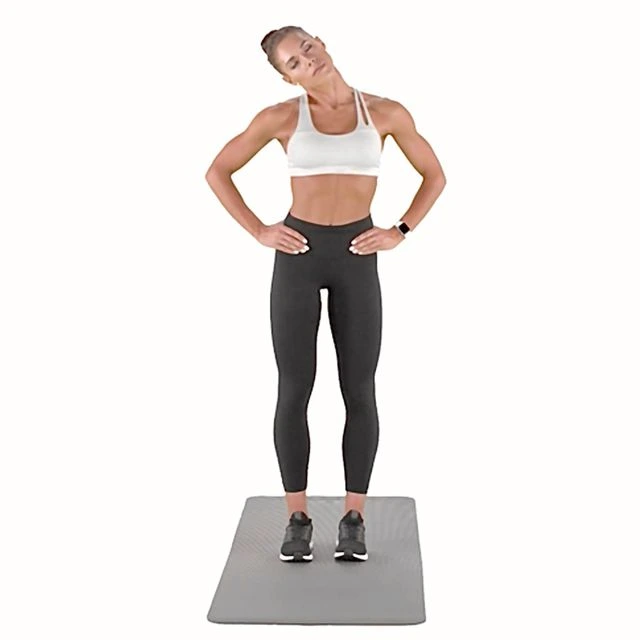
- Stand with your head centered over your shoulders and a tall upright posture. Keep your chin tilted in slightly so your head stays level.
- Relax your jaw completely and place your tongue lightly on the roof of your mouth.
- Shift your upper body slowly to the left without moving anything else. Tilt your head sideways by lowering your left ear toward your left shoulder. Move gradually until you feel a mild-moderate stretch (no pain).
- Hold this left lateral bend for 5 slow counts, feeling the stretch spread along the right side of your neck. Focus on relaxing the shoulder down away from your ear.
- Inhale and raise back through the center, realigning your head over your shoulders and stacking your spine.
- Exhale and carefully tilt your head to the right, lowering your right ear down in the direction of the right shoulder.
- Maintain the right lateral flexion for 5 more counts before returning through the center on an inhale.
- Alternate gently side bending left and right through your full comfortable range of motion. With practice, this will increase.
Always move slowly and control. The goal is to develop tension awareness, muscle length, and a gently expanding range of comfortable neck mobility over time.
Trapezius Stretches
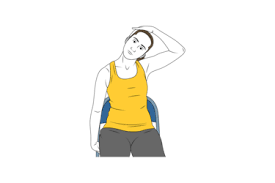
- Sit comfortably with a good upright posture, feet flat on the floor.
- Raise your right arm overhead, bending at the elbow with your fingers reaching for the ceiling.
- Use your left hand to gently pull your right arm farther overhead until you feel a mild stretch in the right side of your upper back and neck.
- Hold this stretch for 30 seconds, continuing to breathe smoothly. Focus on relaxing the muscles around your right shoulder blade.
- Release the arm down and shake it out loosely.
- Repeat the sequence on the other side, using the right hand to stretch overhead the left arm for 30 seconds until feeling tension releasing in the left trapezius area.
- For a standing variation, raise one arm at a time overhead while leaning sideways in the opposite direction until stretch is felt in the upper back and down the neck.
- Remember to keep breathing slowly and deeply throughout the movements, relaxing areas not being stretched.
Always stretch muscles gently within a pain-free range of motion. Over time, consistently applying trapezius stretches helps relieve muscle tightness contributing to neck discomfort.
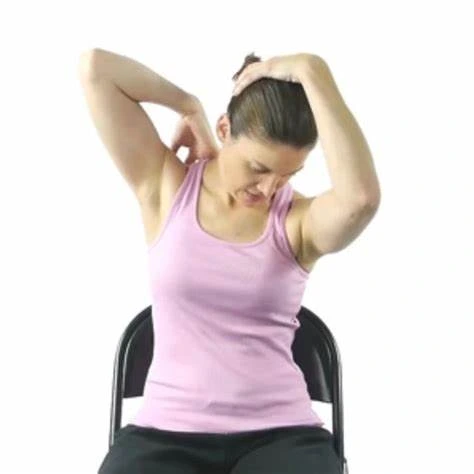
- With your feet flat on the ground, adopt an erect stance as you sit.
- Tilt your head sideways toward your right shoulder until you feel a mild stretch on the left side of your neck.
- Place your right hand on top of your head and gently pull to intensify the stretch. Be sure not to jerk or force the neck’s range of motion.
- Hold this stretch for 30 seconds while continuing to breathe slowly and deeply. Focus on relaxing the muscles around your left shoulder blade.
- Release the stretch by slowly returning your head to the center and removing the right hand from your head.
- Next, tilt your head to the left shoulder and use your left hand to gently traction the head farther into the lean-to target the right levator scapulae.
- Hold for 30 seconds then return through the center.
- Alternate sides to repeat the sequence 2-4 times on each side.
Always stretch gently and fluidly within your pain-free range of motion. Over time this exercise lengthens the levator scapulae muscles and aids neck mobility.
Chin Tuck Neck Retraction
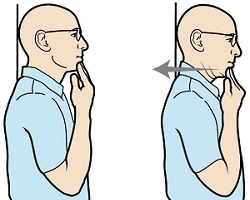
- Stand or sit tall with your back in neutral alignment. Do not arch your lower back. Keep feet shoulder-width apart if standing.
- Look straight forward and draw your chin back towards your throat, without actually taking your chin to your throat. Your neck’s back should feel slightly stretched.
- You can place your index and middle fingers on your chin to help guide the backward motion if needed.
- Only move about 5-10% of your total head range of motion. Do not overstretch the neck.
- Hold the chin tuck contraction for 5-10 seconds while continuing to stand/sit tall.
- Slowly return to the neutral head position. Avoid poking the chin forward.
- Relax the shoulders and repeat the small, subtle chin tuck for 5-10 seconds.
- Complete 10-15 repetitions. Can advance to multiple sets if tolerated well.
- Can also perform small chin tucks while laying on your back with knees bent if standing is difficult.
- Rest for 60 seconds between sets as needed. Ensure proper form before progressing reps or adding resistance bands.
Side-to-Side Turns (Neck Rotation)
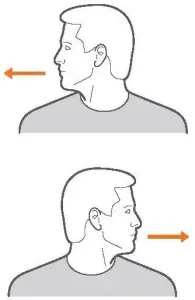
- Sit or stand tall with a good upright posture
- Slowly turn your head toward the right shoulder as far as comfortably possible
- Hold for 5 seconds, then return head slowly to center
- Repeat to the left side, hold, and return to the center
- Start with 5-10 controlled repetitions side-to-side
- Build up to 10-15 reps per side, for 2-3 sets
- Can place a hand on the face being turned toward or hold lightweight for added resistance
- The keys are keeping the spine aligned throughout the movement, avoiding forward/backward tilting of the head, moving slowly and controlled in a comfortable range of motion, and stopping if any pinching is felt.
Prone Cobra Neck Extension Exercise
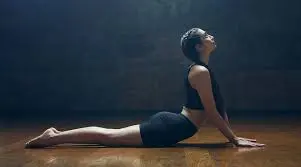
- Lie face down on a flat surface with your forehead resting on a rolled-up towel or small pillow. Place your hand’s palm down at your sides.
- Take a breath in and engage your neck muscles to slowly lift your head off the towel. Keep your forehead forward throughout the movement, do not lift too high. Stop if you feel pinching.
- Hold this isometric contraction for 5-10 seconds as able without holding your breath.
- Slowly lower back down to start, not dropping abruptly.
- Repeat 10-15 times or for 2-3 sets with rest between as needed
Tips:
- Start with a small lift, 1-2 inches at most of the support surface before progressing range.
- Keep shoulders and torso fully relaxed, isolating neck extension.
- Place support object at eyebrow/nose level.
- You can do towel variations to increase the challenge.
Neck Nod Exercise
- Maintain proper posture when sitting or supine.
- Keep your shoulders relaxed and chin level.
- Slowly tilt your head forward as if nodding “yes”, allowing your chin to dip towards your chest. Go only about halfway to your maximum range of motion.
- Hold the tilt for 2 seconds feeling a mild stretch in the back of the neck without pain. Keep shoulders down.
- Raise your head back to the starting neutral position, again stopping before maximum extension.
- Now tilt your head backward as if nodding “no”, allowing the back of your head to reach upwards. Hold 2 seconds.
- Return to neutral. That’s one rep.
- Repeat for 10-15 controlled reps. Move deliberately not rapidly.
- Take short breaks as required. Can apply light hand pressure behind the head during the back tilt for support only.
- Complete 2-3 sets if able. Avoid overextending the neck throughout the exercise. Stop if dizzy or lightheaded.
Neck Roll Exercises
Preparation:
Choose a quiet space with a large mirror so you can visually track the position of your head during the exercise. It can be done sitting on an armless chair or standing with good upright posture and arms at your sides, head facing forward. It is helpful to pause during each rotation to mentally assess for muscle tension.
Instructions:
- Begin with your head upright in a neutral position, with your chin lightly tucked and your eyes forward.
- Slowly tilt your head toward one shoulder. Be careful not to collapse at your waist or hike your shoulder up as you turn your head sideways. Continue the rotation until you reach the end range of motion you can achieve without any strain. Focus on breathing deeply and relaxing muscles not involved in the movement.
- Pause for 1-2 seconds at this maximally rotated position, then reverse the movement to roll your head back up to face center. Again, move only as far as feels comfortable.
- Once your head returns to the center, proceed to tilt and roll it toward the opposite shoulder in a controlled fashion.
- Progressively repeat the sequence, turning your head from side to side within a pain-free range of motion. Move slowly and mindfully during the exercise for around 30-60 seconds per set. Breathe deeply throughout.
For comfort and control, try placing one hand lightly alongside your head or your fingertip on your chin as you guide your head through the rotations. Take care not to jerk or thrust during the movements.
Shoulder Rolls
- Stand tall with your feet shoulder-width apart. Keep your knees softly bent, core engaged, and chin slightly tucked. Pull your shoulders back from your ears and relax.
- Lift your shoulders towards your ears, drawing them up as high as is comfortable. Avoid excessive tension in the neck.
- Slowly roll and circle the shoulders backward and down in a smoothing motion. Trace a circular path as you bring the shoulders downwards and then backward in a controlled, continuous sequence.
- Once the shoulders roll down and back fully, reverse direction and round them up, forward, and up to complete the circle back to the starting position. Move them fluidly through the entire circular trajectory.
- Repeat slow, controlled, and continuous shoulder rolls for 30-60 seconds facing forward, then switch directions oppositely rolling them. Keep breathing smoothly as you open up mobility in the shoulders.
- Then change orientation to do sideways shoulder rolls with weight transfers side-to-side to open up movement in a new plane. Continue focusing on control.
Make sure not to hike the shoulders up too high or forcefully. Fluency and stability are key in getting the most from shoulder roll stretches. Over time this can relieve tension, restore range of motion, and align the shoulders properly.
Resistance Exercises for Neck Strengthening
1. Isometric rotations
- Sit or stand upright holding your head stationary
- Push gently against your hand placed on the side of the face, first in one direction then the other
- Hold 5 seconds each way, repeating 5-10 times
2. Isometric flexion
- Sit or stand upright
- Place the palm of your hand flat on the forehead
- Push forehead gently into the hand, hold for 5 seconds
- Repeat 10-15 times
3. Isometric extension
- Sit or stand upright
- Press one hand’s palm against the back of the head.
- Push head backward into hand, hold for 5 seconds
- Repeat 10-15 times
4. Chin tucks with resistance band
- Loop stretch band around the back of the head by the chin
- Anchor band ends together behind the back
- Pull chin backward to retract neck lightly against band tension, and hold for 3 seconds
- Do 2 sets of 10-15 reps with 30-60 sec rest between
Start very light, like latex therapy bands, ensuring perfect form before progressing resistance. Move only in the range of motion that causes no pain. Stop immediately if dizzy or experience symptoms other than muscle fatigue.
Ergonomics and Postural Correction Techniques for Managing Neck Pain
Ergonomics
Desk Set-Up
- The monitor should be arm’s length away, top of the screen at eye level
- Use monitor risers to elevate the screen
- Document holders position papers upright adjacent to the monitor
- The chair should have lumbar support and height adjusted so feet are flat on the floor
- Keyboard/mouse positioned close together centered with shoulders
Phone Use
- Use a headset instead of pressing the phone between the head and shoulder
- Look straight ahead, not down, when texting
- Bring the device to eye level rather than bending the neck down
Driving Position
- Adjust seat distance/height to prevent slouching forward
- Supportive cushions behind the neck or lower back
- Take frequent breaks on long drives
Sleeping Position
- Cervical pillows support neck alignment
- Avoid stomach sleeping
- Place a towel roll under the neck if the side sleeper
- A softer mattress may assist proper spinal contours
Postural Correction
Establishing and continually realigning proper spinal curves, head balance, and shoulder alignment throughout daily positions and motions are pivotal for reducing strain on the delicate neck musculature. This comprehensive postural approach addresses poor habits that commonly contribute to neck discomfort.
Begin in seated and standing by actively drawing the chin back gently to elongate the back of the neck. Stack the head evenly over the shoulders resisting forward protrusion. Retract and depress shoulder blades down against the ribcage to counter slouching. Widen through the collarbones. Engage core muscles.
In lying, ensure cervical pillows adequately fill the space between the mattress and neck without craning. Place thin cushions between knees or under them when side-lying. Prone postures should be avoided. Consider towels or supports.
Incorporate targeted strengthening like chin tucks with resistance bands or wall presses combined with upper back rows and doorframe chest stretches to sustain corrected alignment. Be mindful of posture with computers, phones, driving, and static head-forward activities.
Developing postural awareness through all functional positions, actively working to reset alignment including with professional hands-on assistance, and building endurance in postural muscles protects injured neck structures from further strain during recovery.
Correct Pillow Positioning Tips
- Support pillow – Place a very thin to medium-sized, low-profile support pillow under your head. The pillow should keep the natural curve of your cervical spine and fill the gap between your neck and mattress. It should not be thick enough to crane the neck forward or up. Cross-linking memory foam pillows work well.
- Back Sleeping – If sleeping on your back, ensure there is a small support cushion under the knees to take pressure off the lower back. Keep your neck straight. A rolled towel or very low, narrow pillow under the neck can also help if a gap persists. Arms can rest comfortably at the sides.
- Side Sleeping – If sleeping on your side, place an additional firm pillow, rolled towels, or bolster between your knees. This will relieve stress on the hips and lower back curves to reduce tension up the spine into the neck. The pillow from Step 1 should still fill the space under the neck to a neutral alignment. Can hug a pillow to your chest.
- Stomach Sleeping – Sleeping face down is not recommended. Those unable to rest in back or side positions who sleep prone should try the “one cheek stance” with the head rotated to one side to avoid neck rotation. Ensure the cushion fills the gap under the neck. Use knee bolster between legs. Arm can hug pillow underneath.
This will help you achieve a neutral, balanced spine without awkward craning of the neck throughout nighttime rest to minimize neck strain and improve sleep quality.
Summary
Neck pain is an exceedingly common issue plaguing people across most age groups. It often originates from strained muscles or injury stemming from poor posture, improper lifting, or maintaining the neck in less-than-ideal positions during daily computer use or phone scrolling.
The good news is that the majority of neck pain resolves well with conservative at-home remedies like rest, ice or heat application, OTC medication, gentle stretches, and easy exercises to alleviate muscle tightness. However, some cases can become chronic or even debilitating over time, especially in older populations.
This neck pain informational blog post covers all the key details readers need to understand about managing this widespread condition themselves or determining when specialist help may be prudent. We explore the common root causes like muscle tension, disc injuries, or spinal arthritis. Readers gain insight into home treatment fundamentals like correcting workstation ergonomics, swapping pillows to support better sleep postures, easing strained tissues with heat packs, and targeted neck rotations or retractions.
For pain not relieved through basic means, further options are elucidated such as physical therapy modalities like ultrasound, traction, and massage, minimally invasive injections, complementary techniques like acupuncture or chiropractic care, and specifics on surgical interventions if conservative routes fail to ease pain long-term. Wholistic lifestyle adjustments regarding diet, exercise, stress relief, and more are also spotlighted as pivotal for enhancing recovery.
Arm yourself with all the knowledge you need to either manage neck discomfort with practical at-home techniques or work productively with your healthcare provider to restore your neck to pain-free status through more advanced measures. Regaining mobility and strength with grace and efficiency is the ultimate objective.
FAQs
What are the causes of neck pain?
Some of the most common causes include poor posture, muscle strain from overuse or injury, arthritis in the spinal bones, a pinched nerve or herniated disc, and diseases like meningitis. Long hours hunching over computers or phones and sleeping in awkward positions also often contribute.
When should I see a doctor for neck pain?
See your doctor if the pain is severe and doesn’t improve with rest, radiates down an arm, causes weakness or numbness, follows a significant injury, or is accompanied by symptoms like fever, headache, or weight loss which could indicate a more serious health issue.
What home remedies help relieve neck pain?
Gentle stretches, OTC pain medication, alternating hot and cold packs, therapeutic massage, Epsom salt soaks, topical menthol/capsaicin creams, and ergonomic corrections for daily activities can help manage neck discomfort.
How can I prevent neck pain from returning?
Daily exercises that strengthen neck muscles, maintain good posture, establish ergonomic workstations and sleeping positions, manage stress, stay active, and avoid repetitive strain activities can help prevent recurrent neck pain episodes.
What type of pillow is best for neck pain and alignment?
An orthopedic cervical pillow designed to cradle the neck or a contoured memory foam pillow offering customizable height/support for proper spine alignment can minimize neck pain from poor sleeping ergonomics.
When is surgery necessary as a treatment option?
If degenerative disc disease, spinal stenosis, or a herniated disc causes debilitating nerve-related pain or numbness that continues despite extensive conservative treatment, surgery like spinal fusion may be warranted.
Are alternative treatments like acupuncture effective?
Some patients find success using integrative medicine approaches like acupuncture, massage, or chiropractic in conjunction with traditional physical therapy and pain management methods. Results vary by individual.
Does diet impact neck pain?
Yes, maintaining a healthy diet and weight can reduce inflammation. Anti-inflammatory foods, staying hydrated, and avoiding triggering foods like caffeine/alcohol for sensitive individuals can be beneficial. Nutritional deficiencies may also contribute to poor bone/muscle health.
References
- Neck pain – Symptoms and causes – Mayo Clinic. (2022, August 25). Mayo Clinic. https://www.mayoclinic.org/diseases-conditions/neck-pain/symptoms-causes/syc-20375581
- Pietrangelo, A. (2023, April 20). Neck Pain: Symptoms, Causes, and How to Treat It. Healthline. https://www.healthline.com/health/neck-pain
- Oyanagi, M. (2022, November 9). How to Fix Neck Pain: Tips for Immediate Relief and Prevention. wikiHow. https://www.wikihow.com/Fix-Neck-Pain
- Parmar, R. (2022, June 16). Neck pain: Cause, Symptoms, Diagnosis, Treatment, Exercise | Mobile P. Mobile Physiotherapy Clinic. https://mobilephysiotherapyclinic.in/neck-pain-treatment-exercise/
- Patel, P. (2023, March 8). Ergonomics for neck pain (Neck Pain Care): – Samarpan Physio. Samarpan Physiotherapy Clinic. https://samarpanphysioclinic.com/neck-pain-care-ergonomics-of-neck-pain/
- Prajapati, D. (2023, June 29). Best Exercise for Neck pain. Samarpan Physiotherapy Clinic. https://samarpanphysioclinic.com/best-exercise-for-neck-pain/
- Exercises to Ease Neck Pain. (2020, November 12). WebMD. https://www.webmd.com/fitness-exercise/exercises-ease-neck-pain

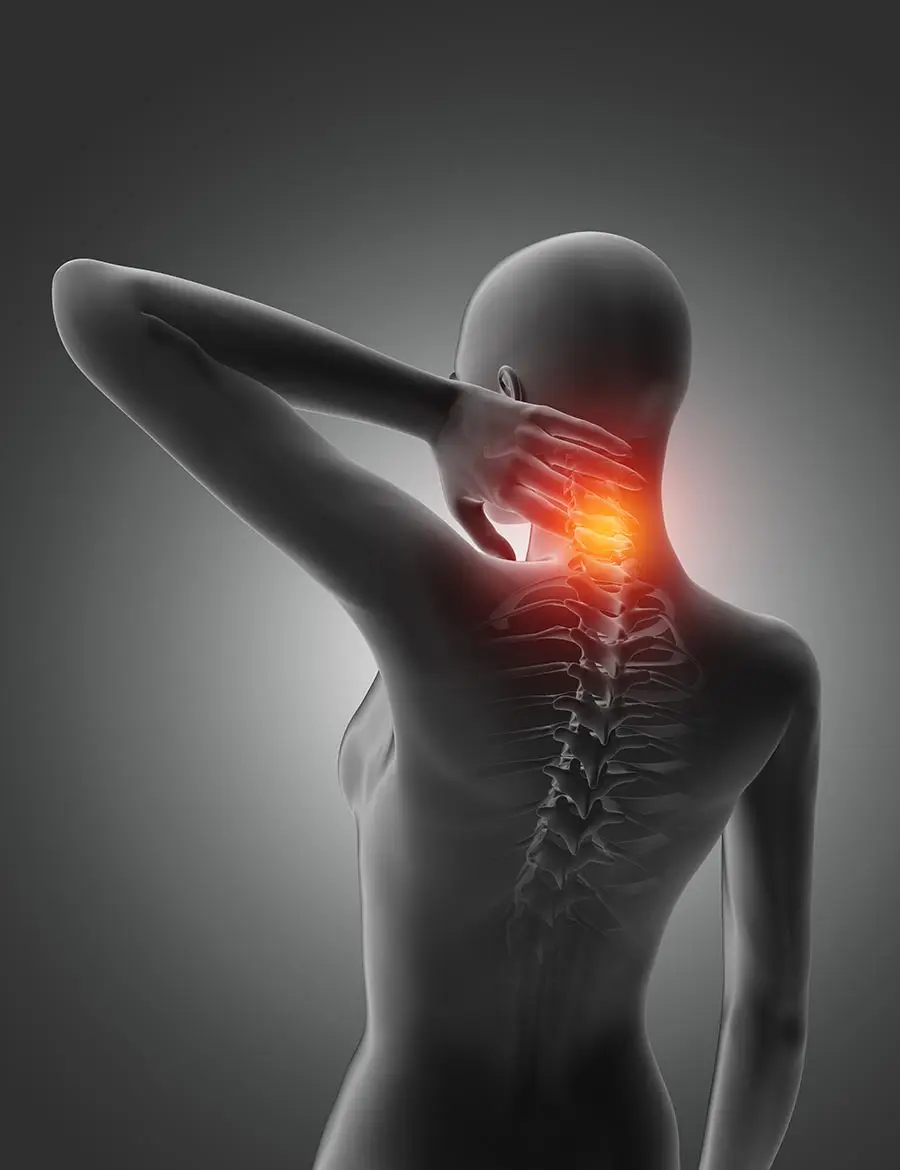
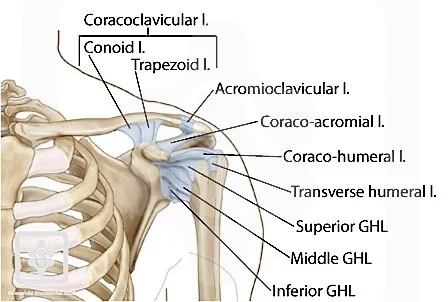
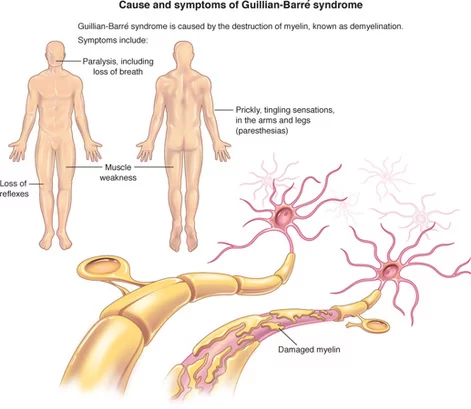
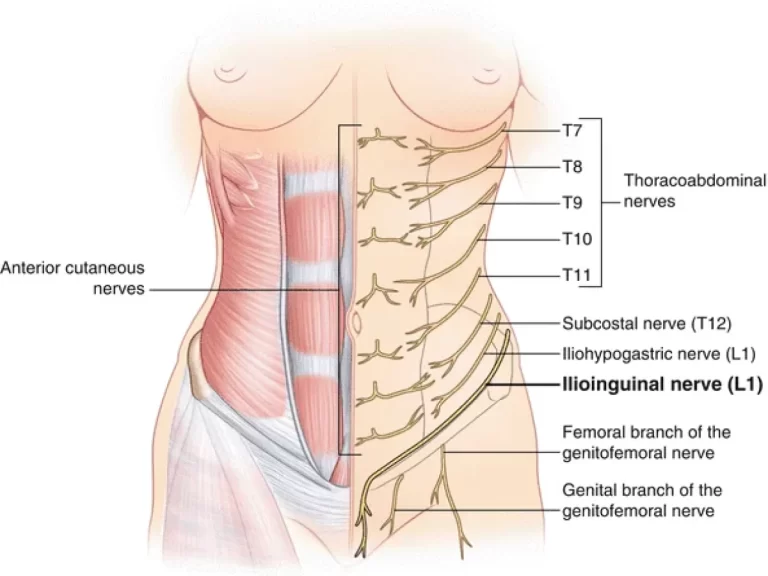
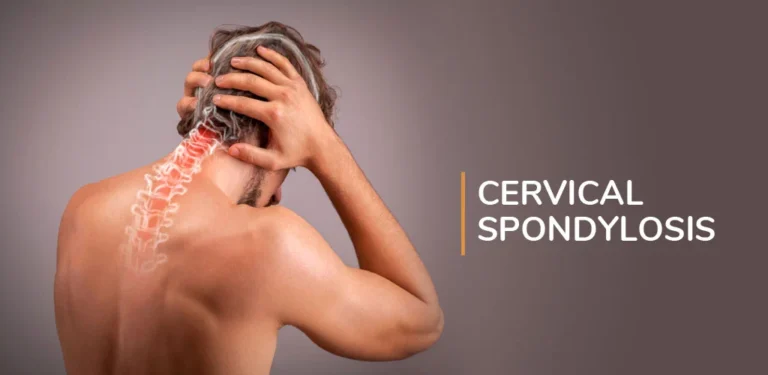
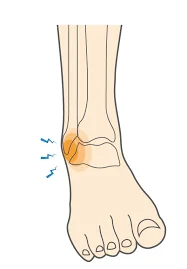
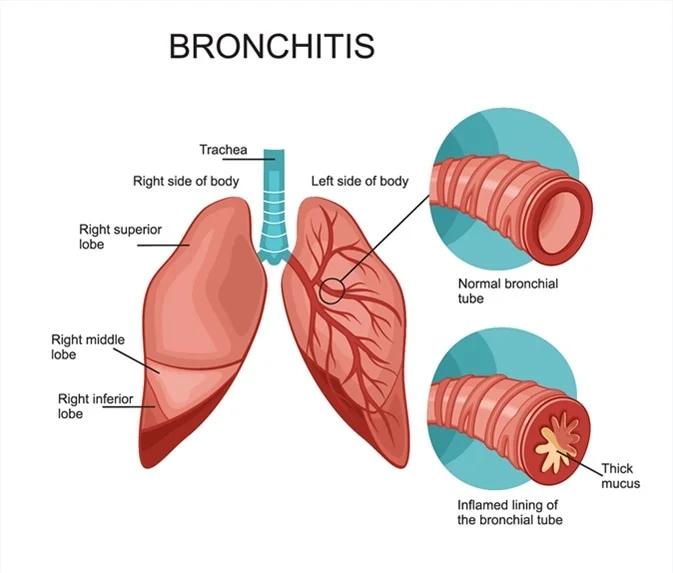
45 Comments